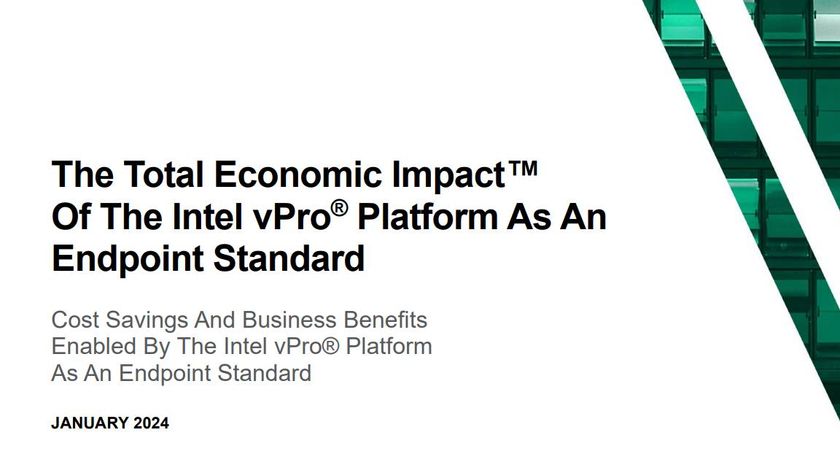New classes of information are measured by intricacy, not size
How do you keep steel factories running smoothly? Steve finds 150 is the magic number and reveals some home email truths about hybrid IT
How hybrid IT backs up the cloud
If you're trying to make sense of the blizzard of cloud-focused marketing blurb that every IT professional has to sweep out of their inbox almost daily, then the title of this section will fill you with dread. For one thing, getting a decision-maker to understand that cloud services don't automatically or reliably come with backup included (or that, if they do, the backup won't be more destructive than helpful) is a huge barrier to doing what they say they want by staying current, on-trend and up-to-date with peers.
For another, hybrid IT is defined as the hardest of technical challenges the idea that you can't start being hybrid until you have a fat, secure, exclusive pipe to the cloud makes it a whole lot tougher to achieve, because that's the most expensive part of the process. Historically, IT projects with all the spend at the start are the hardest to sell.
Except, I just made use of my hybrid IT setup, to give myself business continuity in the face of an unpredictable cloud failure. No, really, I did. Even though I tend to log in to my email provider's web interface when I'm travelling, when at home I use an IMAP collect email application. Not because I have perfect foresight that this day would dawn. Rather, that force of habit and an interest in diverse connection methods are both powerful influences on a basically lazy Cassidy.
So what's up? As of this moment, it looks as if something has gone dramatically wrong, somewhere in the west coast of the USA. All forms of traffic-requesting replies from my email provider's domain name are being dropped, about eight hops from me (normally, four hops from my email provider). I'd like to say I've talked to its support team and extracted lots of very specific diagnostics, but its contact web page is part of the same top-level domain, and attempts to connect to it result in the same plaintive errors I'm getting from IMAP. As a result, this looks to me like a routing mess-up or a domain and server address resolution problem neither of which get fixed any faster by me remaining on hold to a number in California with a very busy person on the end of it.
But I'm okay, because I have a local archive. It's just the mail software's own store databases, but my point here is that it qualifies. It lets me pick and choose whether I'm online or offline, and I can go get messages that are otherwise stuck behind my mysterious provider outage. That's hybrid IT. The fact that it's on a machine I rescued from a skip, running a piece of free software on a consumer internet pipeline, doesn't detract at all from what it lets me do.This kind of pragmatism, in feeling you've passed the test of cloud mastery, reveals some strange flaws in the way people view the services they use. Email keeps being assessed as an inconvenience, or an affectation of pre-millennial office types, and yet the development of tools in this field goes on apace. I didn't really think of my humble single email client as a business continuity tool until I was talking to Arcserve about its very recent addition of an email archiver to its UDP range of data protection applications.
Stifle that incipient yawn! It turns out that along with the strange need to talk down a technology we all depend upon every day, cloud adopters are still every bit as agonised, as dependent and at-risk from losing data as all us dinosaurs. Finding out you've lost messages from an online email account is a one-way process generally, once they've gone, the online supplier has already run out of ways to make them available, and your call isn't going to re-motivate them. It's far more sensible to collect the messages you can see, while you can see them, and store them in a way that has no dependency on a user-account on the cloud, on a staff member's passwords, or on keeping your internet link up 24/7.All of that adds up to local storage, local compute, and some kind of local aggregation service, equipped to log in to all the cloud resources and sweep up all the unread messages although Arcserve's solution isn't quite as low-key as mine. It arrives as a Linux VM, preconfigured with the look and feel of the rest of its backup application, for the sake of operator familiarity. Onboarding stuff from the cloud isn't the only option, either: you can park your messages from almost every type of Exchange server. Even my old friend IBM/Lotus Domino is supported. Perhaps the most interesting idea of all is that you can leave users sitting in Outlook, clicking on the infamous, confusingly presented "archive" feature, and have them shown just their messages from the local archive server.
This has an unexpected spinoff. If you're a packrat and there's no shortage of these in the email sector then one of the forthcoming bumps in the road is the whole matter of GDPR (general data protection regulation). Some people think they can claim that personal email isn't included, even if it does contain someone's personal data as part of the payload of a message. Just leaving such a thing in an old email server is grounds for not passing a GDPR survey because, paradoxically, it's too easy to retrieve. The demands of GDPR extend to the architecture of the repository used for personal data, mandating encrypted transport and retention. While I'd support an exceptionally pedantic techie who could claim that an Exchange Message Store qualifies, simply because you can't open it in Notepad and read the data back in plain, I wouldn't want to rely on such a distinction when it comes to attentive government departments with fines to collect and scalps to chalk up.Moving all those emails from cloud stores with unclear retention policies and untested restore capabilities, or from both distributed (PSTs) and centralised (.mdbs) message stores to a 2017 database repository in an enterprise-grade software environment, wipes out the issue of old software not meeting new regulations. And it does it inside the business, without having to fall prey to some salesperson's smoke and mirrors about eventual and final costs.
Get the ITPro. daily newsletter
Sign up today and you will receive a free copy of our Focus Report 2025 - the leading guidance on AI, cybersecurity and other IT challenges as per 700+ senior executives
I have an uncomfortable feeling that, in the past, I might have been overly fascinated by the technical challenges represented by Big Hybrid by how you move VMs around from an on-premises hosting farm to a virtual, off-premises one, and how the bigger players have been solving this and other issues by laying fibre right to the customer's door. That's still a part of the bigger hybrid picture. But the fact is, you can start a conceptual demonstration with nothing more than a single-person email account, an IMAP collector, and some disk space even to show what's possible with bigger, enterprise-grade solutions.
This article originally appeared in PC Pro. Main image credit: Bigstock.

















